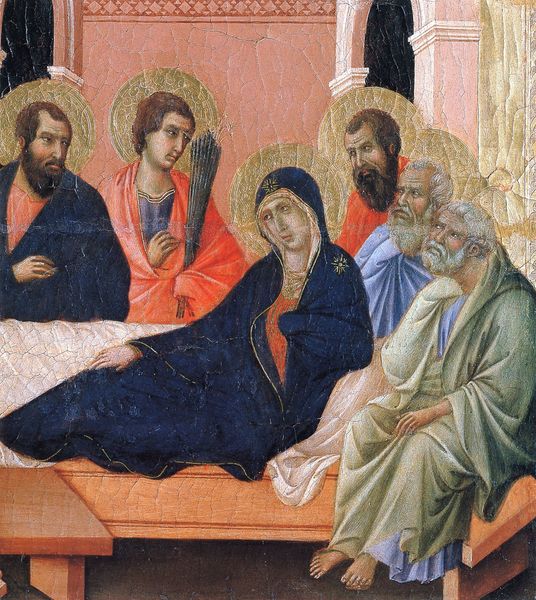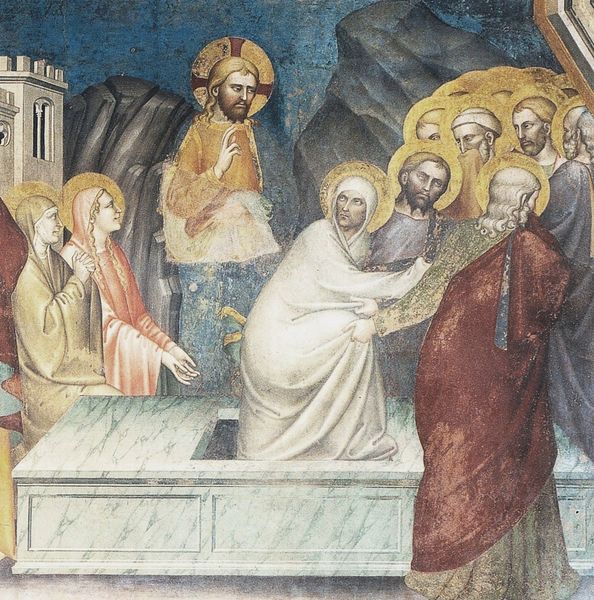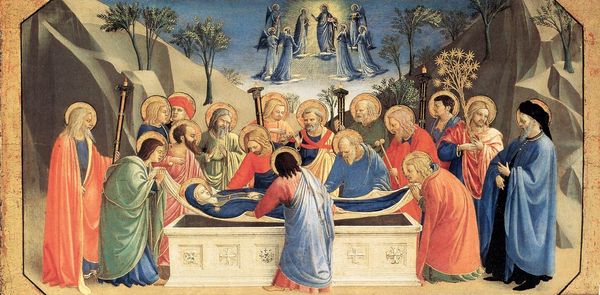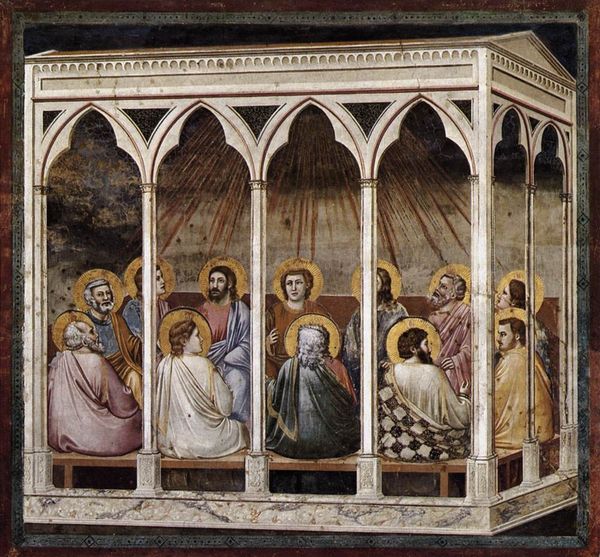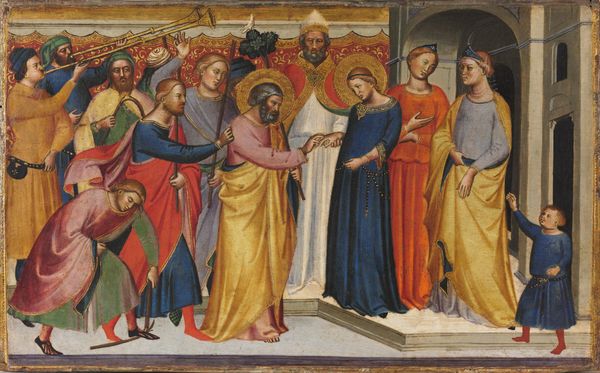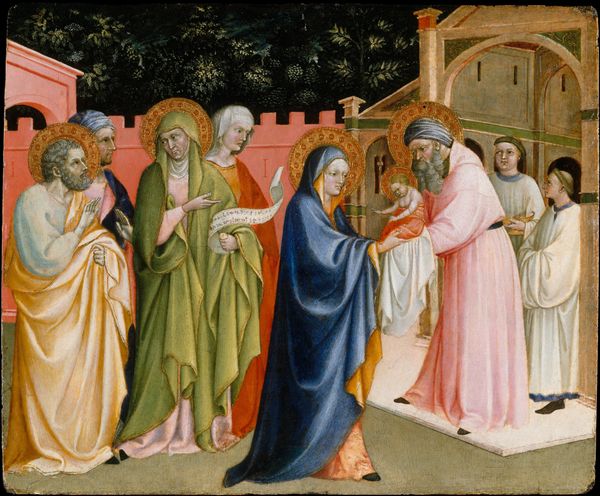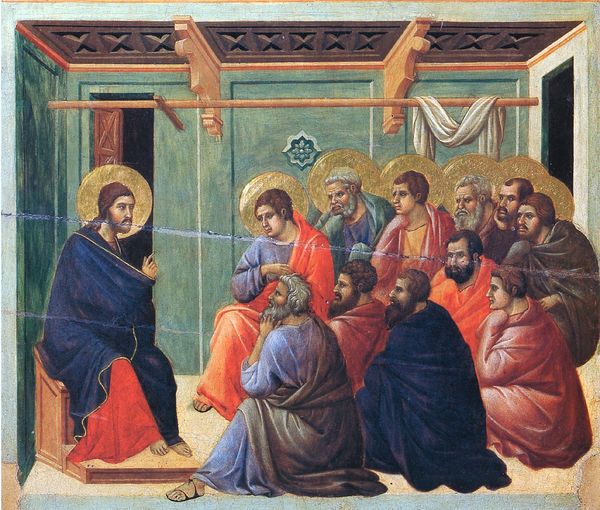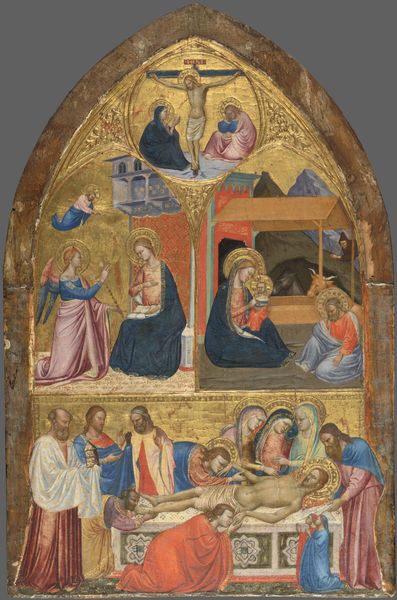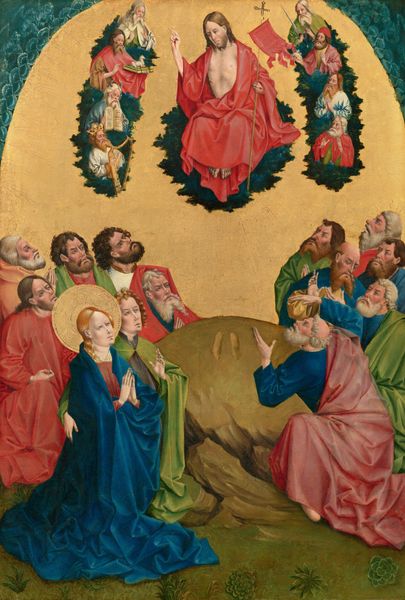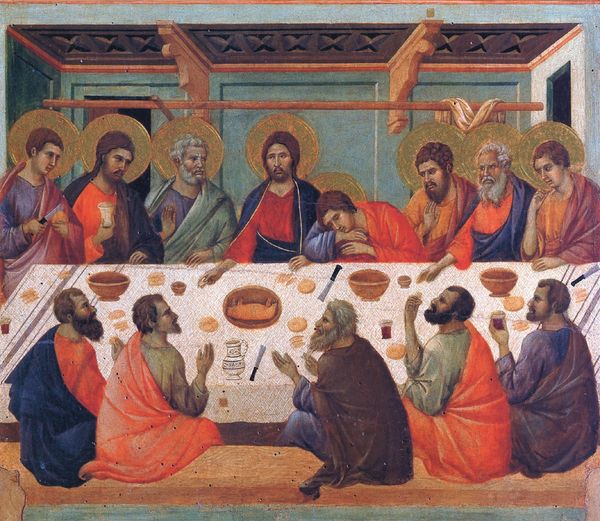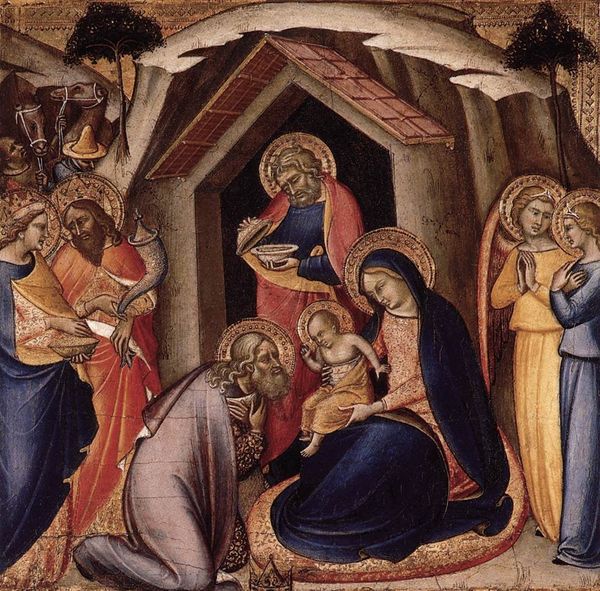
tempera, painting
#
medieval
#
narrative-art
#
tempera
#
painting
#
figuration
#
oil painting
#
history-painting
#
international-gothic
Dimensions: Panel: 43.6 × 67.6 cm (17 1/8 × 26 5/8 in.); Painted Surface: 40.4 × 64 cm (15 15/16 × 25 1/4 in.)
Copyright: Public Domain
Curator: At first glance, this strikes me as a beautifully staged tableau vivant rather than a scene of mourning. What do you think? Editor: Well, I suppose death scenes back then were less about raw grief and more about divine transition, weren’t they? This tempera on panel painting is titled "The Death of the Virgin," made between 1405 and 1410 by Gherardo Starnina. You can find it right here at the Art Institute of Chicago. Curator: Absolutely, it's a window into the late medieval or International Gothic style. The layering of figures and the halos certainly emphasize a visual order dictated by theology. Look how Jesus reappears at the top holding a miniature version of Mary—it's such a striking, symbolic representation of her ascent. Editor: It feels almost theatrical, doesn’t it? All these figures crammed in—I’m trying to read their expressions, but there's a stillness to them that feels carefully composed. No messy sobbing here! Even the angels are kind of politely hovering. Curator: The symmetry is indeed notable. See the positioning of the angels with their candles? They frame the scene but also guide our eyes to Mary, emphasizing her central role in this moment of passing. Light and shadow, in the medieval understanding, play a significant part—showing heavenly importance through the shining gold and bright halos. Editor: And yet, despite the formal arrangement and all the religious symbolism, there's something deeply touching about it. That figure kneeling at the foot of the bed…there's a tender intimacy in that small gesture, a personal connection that cuts through the layers of iconography. Curator: Yes, there are many ways we may interpret the details and it’s really up to the individual, but seeing an actual connection within all the symbolism is rather fulfilling. The halos suggest divinity and a specific religious status, but even divinity, as is being shown in this art, needs a soft, earthly element as a human connector to translate these deep emotions. Editor: It certainly makes me think about how we represent death today versus centuries ago and I like that it makes us connect to something old, something iconic that’s become part of the universal consciousness. Curator: A perfect observation indeed. This offers viewers of any generation the ability to connect the symbols with its deeper rooted themes.
Comments
No comments
Be the first to comment and join the conversation on the ultimate creative platform.
